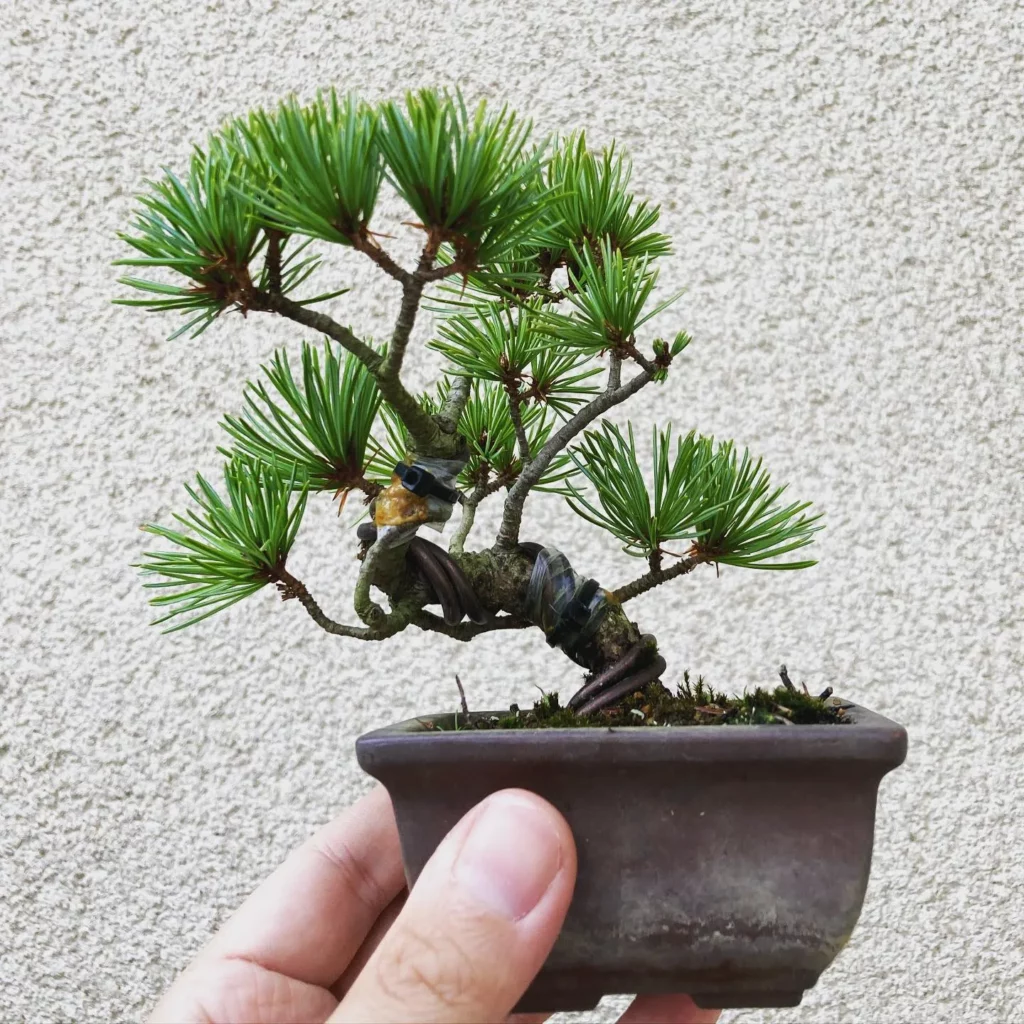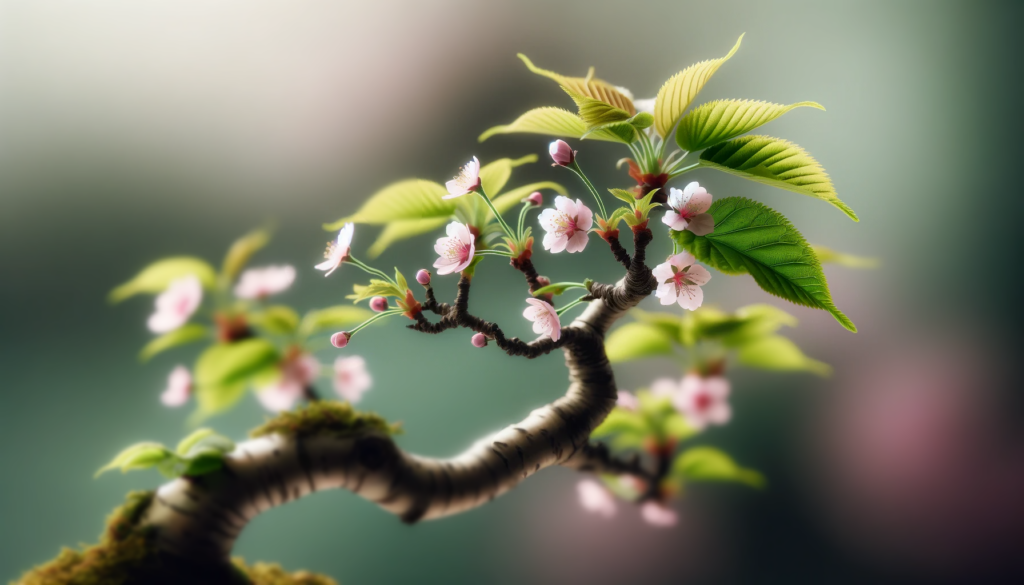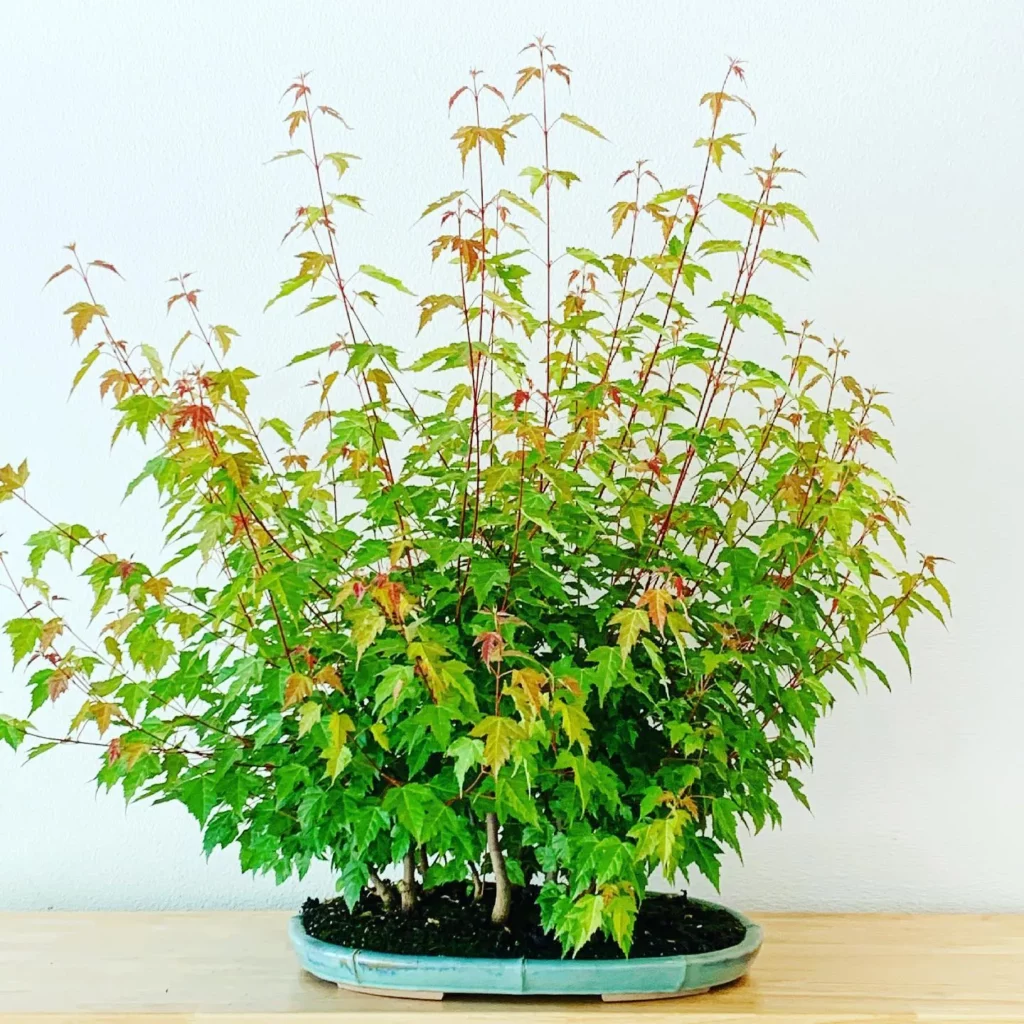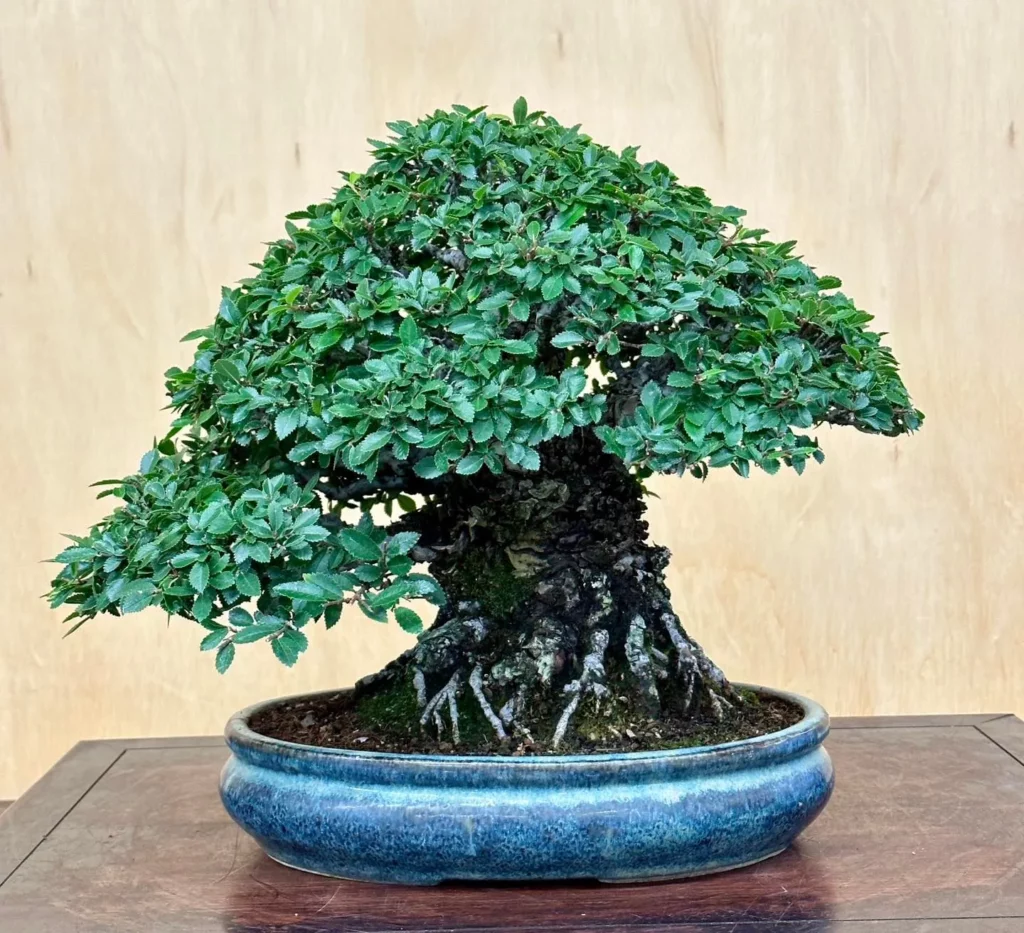Olive bonsai trees are known for their unique and artistic appearance. With their gnarled trunks and rough bark, they exude a sense of age and maturity. The ramified evergreen foliage of olive bonsai trees is a sight to behold. The narrow lanceolate to elliptic leaves have a silvery-grey hue, adding elegance to the tree’s overall aesthetic.
Key Takeaways:
- Olive bonsai trees are known for their ramified evergreen foliage and artistic appearance.
- They thrive in full sun conditions and should be protected from strong frost.
- Watering should be done when the soil becomes dry, avoiding constant wetness.
- Regular fertilization with a bonsai-specific fertilizer promotes healthy growth.
- Repotting should be done every two to three years using a well-draining soil mix.
Appearance of Olive Bonsai



In addition to their foliage, olive bonsai trees produce small yellowish-white flowers that are followed by green drupes. These drupes eventually turn black when fully ripe. Olive fruits are not only visually appealing but also have a practical use. They are commonly used for producing olive oil, making olive bonsai trees both visually captivating and versatile.
Whether you’re an experienced bonsai enthusiast or a beginner, cultivating an olive bonsai tree can bring a touch of natural beauty to any space. Its distinctive appearance and historical significance make it a popular choice among bonsai enthusiasts around the world.
No products found.
Light Requirements for Olive Bonsai



Proper lighting is essential for the healthy growth and development of olive bonsai trees. These trees thrive in full sun conditions and require ample sunlight to thrive. It is recommended to place your olive bonsai in a location that receives direct sunlight for at least 6 to 8 hours a day. Sunlight exposure helps reduce the size of the leaves and promotes compact growth.
While olive bonsai trees can tolerate temperatures slightly below freezing, it is important to protect them from stronger frost. During the winter months, it is best to keep your olive bonsai in a cold greenhouse that is frost-free. Placing them in a warm room indoors can lead to a lack of light and dry air, making the tree susceptible to scale infestations.
When positioning your olive bonsai outdoors, it is important to consider the orientation of the tree. The best position is facing south or southwest, as it maximizes sunlight exposure throughout the day. This ensures that your olive bonsai receives the necessary sunlight for optimal growth and overall health.
- Place your olive bonsai in a location that receives at least 6 to 8 hours of direct sunlight daily.
- Protect your bonsai from strong frost by keeping it in a frost-free cold greenhouse during winter.
- Avoid placing your olive bonsai in warm indoor rooms with limited light and dry air.
- Position your outdoor bonsai facing south or southwest for maximum sunlight exposure.
Watering Olive Bonsai

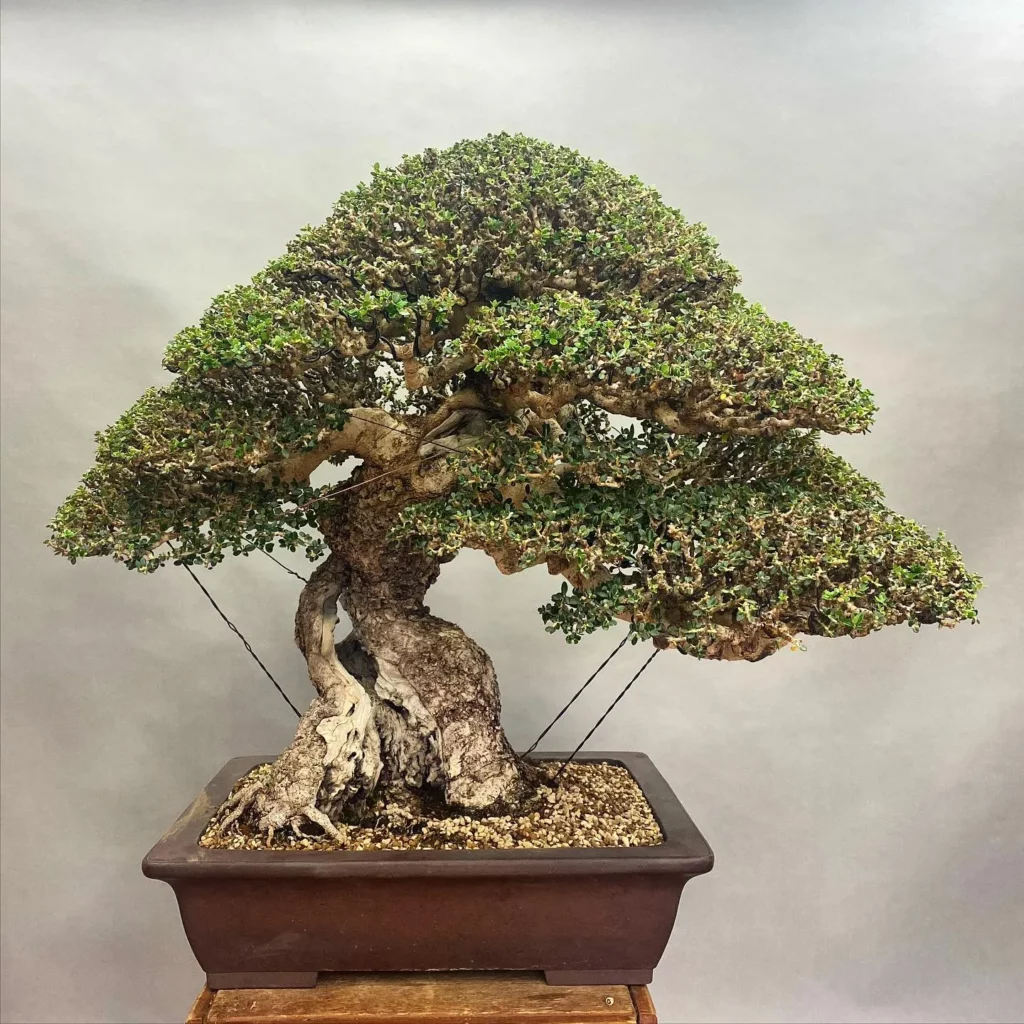

Proper watering is essential for the health and vitality of your olive bonsai tree. Here are some important tips to keep in mind:
- Monitor the soil moisture: Olive bonsai trees prefer a slightly moist but well-drained soil. Check the moisture level of the soil regularly by inserting your finger about an inch deep into the soil. If it feels dry, it’s time to water.
- Avoid overwatering: While it’s important to keep the soil moist, overwatering can lead to root rot and other issues. Allow the soil to dry out slightly between waterings to prevent waterlogged conditions.
- Use the right watering technique: When watering your olive bonsai, make sure to thoroughly wet the entire root ball. Water gently and slowly to allow the water to penetrate deeply into the soil.
- Consider environmental factors: Factors such as temperature, humidity, and the size of your bonsai pot can affect the watering needs of your olive tree. During hot and dry weather, you may need to increase the frequency of watering.
Fertilizing Olive Bonsai
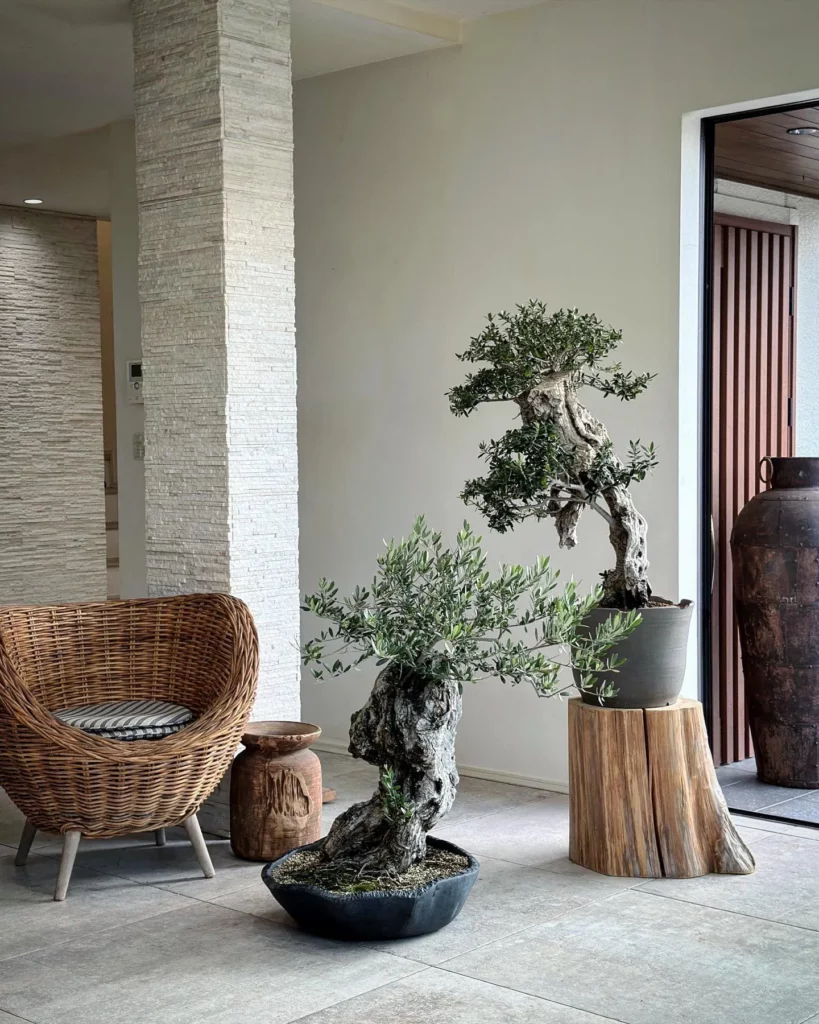
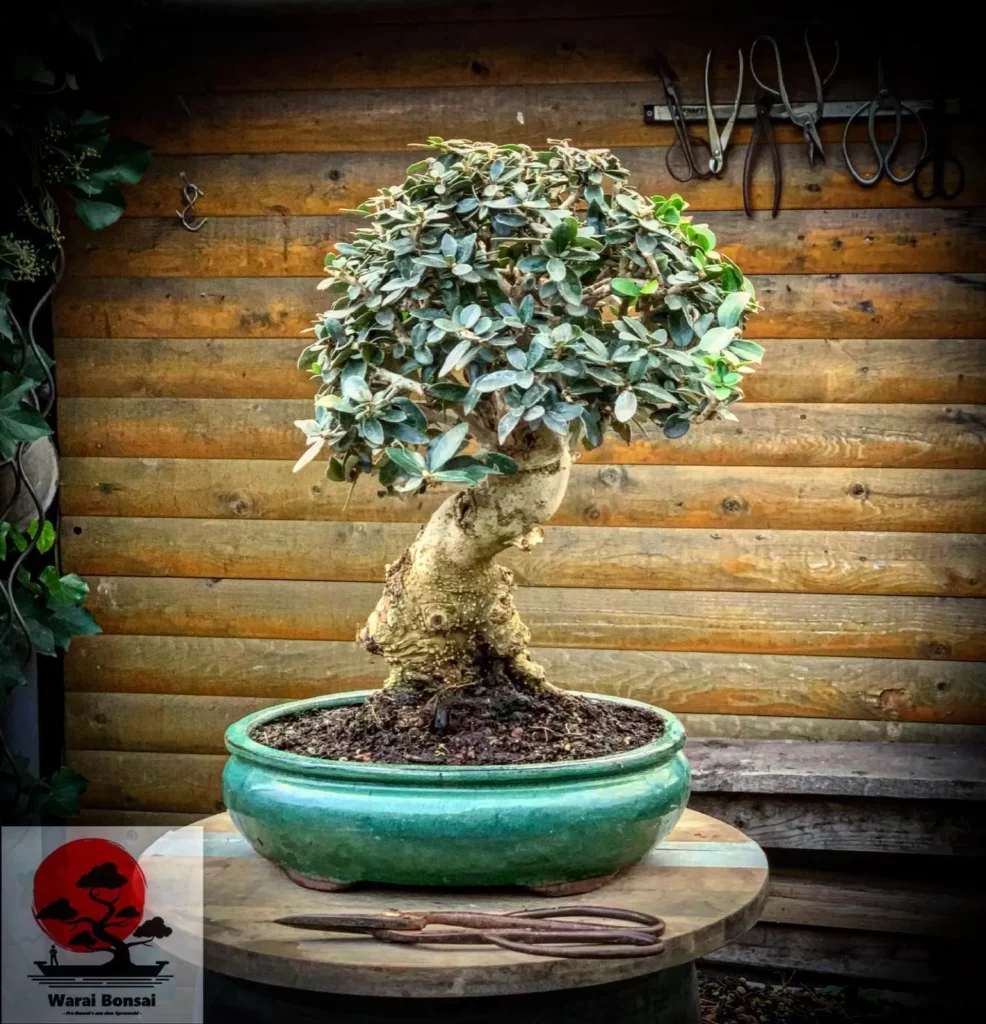

Proper fertilization is essential for the healthy growth and development of olive bonsai trees. By providing the right nutrients, you can ensure that your tree thrives and maintains its vibrant appearance. Here are some key points to keep in mind when fertilizing your olive bonsai:
- Choose a suitable fertilizer: Select a fertilizer specifically formulated for bonsai trees. Look for a balanced ratio of nutrients, with equal amounts of nitrogen, phosphorus, and potassium. This will help promote overall growth and strengthen the tree’s resistance to pests and diseases.
- Timing: Fertilize your olive bonsai during the growing season, typically in spring and summer. This is when the tree is actively taking up nutrients and can benefit the most from fertilization.
- Application method: There are two primary methods of applying fertilizer to your olive bonsai: solid organic fertilizer or liquid fertilizer. Solid organic fertilizer can be applied every four weeks, while liquid fertilizer can be used on a weekly basis. Follow the instructions provided by the manufacturer for the correct dosage.
- Monitor your tree’s response: Keep an eye on your olive bonsai after fertilization. Look for signs of healthy growth, such as vibrant leaves, increased branching, and overall vigor. If you notice any adverse effects, such as leaf burn or discoloration, adjust the fertilizer dosage accordingly.
Potting Olive Bonsai



When it comes to potting your olive bonsai tree, there are a few key considerations to keep in mind. Firstly, it’s important to repot your olive bonsai every two to three years in the spring before the buds begin to swell. This allows the tree to establish new roots and ensures its overall health and vitality. During the repotting process, it’s recommended to remove around a third of the roots to stimulate healthy root growth.
Choosing the right soil mix is crucial for the success of your olive bonsai. Opt for a well-draining soil mix with a slightly alkaline pH value, ideally ranging between 7 and 8. This pH range mimics the natural soil conditions preferred by olive trees and promotes optimal root health. Ensuring proper drainage is essential, as excessive moisture can lead to root rot and other complications.
When potting your olive bonsai, select a pot that is proportionate to the size of the tree and allows for future growth. Bonsai pots with good drainage holes are highly recommended to prevent waterlogging. Additionally, consider using wire or string to secure the tree in the pot and provide stability. Regularly inspect and adjust the positioning of the tree within the pot to maintain balance and aesthetics.
Key Points:
- Repot olive bonsai every 2-3 years in spring
- Remove around a third of the roots during repotting
- Use a well-draining soil mix with a slightly alkaline pH
- Select a pot with good drainage and proportional size
- Secure the tree in the pot for stability
Propagating Olive Bonsai: A Guide to Growing Your Own
If you’re a bonsai enthusiast looking to expand your collection, propagating olive bonsai trees can be a rewarding and cost-effective way to do so. Olive bonsai trees can be propagated through seeds and cuttings, each method offering its own advantages. Let’s explore the two techniques and learn how you can successfully propagate your very own olive bonsai tree.
Propagation from Seeds
Starting olive bonsai trees from seeds is a patient and rewarding process. Collect seeds from ripe olive fruits, making sure they are fully mature. Soak the seeds in warm water for 24 hours to help soften the hard outer shell. Next, plant the seeds in a well-draining potting mix, ensuring they are covered with about 1 inch of soil. Keep the soil consistently moist and place the pot in a warm location with plenty of sunlight. Germination can take several weeks to several months, so be patient and maintain the ideal growing conditions. As the seedlings grow, provide them with proper care and pruning to shape them into beautiful bonsai trees.
Propagation from Cuttings
If you’re looking for a quicker method to propagate olive bonsai trees, taking cuttings is the way to go. Select a healthy branch from an established olive bonsai tree, preferably one with semi-hardwood. Cut a 6 to 8-inch section from the branch, making sure to remove any leaves from the lower half. Dip the cut end of the cutting in rooting hormone, then plant it in a well-draining potting mix. Water the cutting thoroughly and place it in a warm and sunny location. Mist the cutting regularly to maintain adequate humidity. After a few weeks, you should start to see roots forming. Once the cutting has established a strong root system, you can begin shaping it into a bonsai tree.
- Gather ripe olive fruits and extract the seeds
- Soak the seeds in warm water for 24 hours
- Plant the seeds in a well-draining potting mix, ensuring they are covered with about 1 inch of soil
- Maintain consistent moisture and provide ample sunlight for germination
- Take a healthy branch from an established olive bonsai tree
- Cut a 6 to 8-inch section from the branch and remove lower leaves
- Dip the cut end of the cutting in rooting hormone
- Plant the cutting in a well-draining potting mix and water thoroughly
- Place the cutting in a warm and sunny location and mist regularly for humidity
Whether you choose to propagate olive bonsai trees from seeds or cuttings, the key to successful propagation lies in providing the right growing conditions and proper care. With patience and dedication, you can watch your propagated olive bonsai tree flourish and add beauty to your bonsai collection.
Growth and Development of Olive Bonsai
As you cultivate your olive bonsai tree, you’ll witness its slow but steady growth and development. These trees have a remarkable lifespan, with some lasting several hundred or even a thousand years. To encourage healthy growth, it’s important to engage in strong pruning during the late winter. This pruning stimulates vigorous growth in the following spring.
Olive bonsai trees have the unique ability to bud from old wood, which allows for creative shaping and styling. To maintain the desired shape and size, it’s essential to prune new shoots back to one or two pairs of leaves. You can even defoliate healthy specimens to promote fine ramification and further refine their appearance.
Key Points:
- Olive bonsai trees have a slow growth rate but can live for several hundred years.
- Strong pruning during late winter stimulates vigorous growth in the following spring.
- Prune new shoots to maintain shape and size, and defoliate healthy specimens for fine ramification.
By properly caring for your olive bonsai and giving it the necessary attention, you can witness its growth and development over time. Patience is key when working with these trees, as they gradually transform into stunning works of living art.
Pests and Diseases of Olive Bonsai
While olive bonsai trees are generally resistant to common pests and diseases, they can still be susceptible to certain issues. It’s important to regularly inspect and monitor your bonsai tree for any signs of pests or diseases to ensure its long-term health. Here are some common pests and diseases that may affect olive bonsai trees:
Common Pests:
- Scale: If you notice small bumps or shells on the leaves or stems of your olive bonsai, it may be infested with scale insects. These pests can be controlled using specific pesticides or by providing better conditions for the tree, such as increased light and improved air circulation.
- Mealybugs: Mealybugs are small, white, cotton-like insects that can feed on the sap of olive bonsai trees. If you spot these pests, it’s important to take immediate action to prevent them from spreading. Regularly inspecting your tree and using suitable pesticides can help eliminate mealybugs.
Common Diseases:
- Root Rot: Excessive moisture or poor drainage can lead to root rot in olive bonsai trees. To prevent this disease, make sure your tree is planted in well-draining soil and avoid overwatering. If root rot is detected, it may be necessary to repot the tree using fresh soil.
- Fungal Infections: Olive bonsai trees can be prone to various fungal infections, such as powdery mildew and black spot. These infections can be prevented by providing good air circulation, avoiding overwatering, and keeping the foliage dry. If a fungal infection occurs, specific fungicides can be used to treat the affected areas.
By being vigilant and taking appropriate measures, you can prevent and manage pests and diseases in your olive bonsai tree, ensuring its health and vitality for years to come.
Symbolism and Uses of Olive Trees
Olive trees have a rich history and symbolism that spans across various cultures and religions. These ancient trees are often associated with peace, wisdom, longevity, and renewal. The olive branch, a symbol of peace, has been used since ancient times, including in the story of Noah’s Ark and as a peace symbol in Greek mythology. The olive tree itself symbolizes strength, resilience, and the enduring power of nature.
Aside from their symbolic importance, olive trees have been widely used for their practical purposes. The fruits of olive trees are harvested to produce olive oil, a staple in Mediterranean cuisine and a versatile ingredient in cooking, baking, and dressings. Olive oil is known for its health benefits, including its high content of monounsaturated fats and antioxidants. It is also used in beauty and skincare products due to its moisturizing and nourishing properties.
In addition to their culinary and cosmetic uses, olive trees are cultivated for their aesthetic appeal. With their ramified evergreen foliage, gnarled trunks, and rough bark, olive bonsai trees bring a touch of elegance and history to any bonsai collection. The art of shaping and nurturing olive bonsai trees allows enthusiasts to create miniature versions of these majestic trees, showcasing their unique characteristics and embodying their symbolic meanings.
Differentiating Olive Bonsai Varieties
Olive bonsai trees come in a variety of species, each with its own unique characteristics. Understanding the differences between these varieties can help you choose the right olive bonsai tree for your collection. Here are some common olive bonsai varieties:
Olea europaea:
This is the most common variety of olive bonsai. It has silvery-grey leaves and can grow up to 10 or 20 meters tall. The fruits of the Olea europaea variety are commonly used to produce olive oil.
Olea europaea sylvestris:
Also known as the wild olive bonsai, this variety is highly valued for its tiny leaves and short internodes. It is popular in bonsai cultivation due to its compact size and unique appearance.
Cultivated Varieties:
There are also cultivated varieties of olive bonsai that have been bred for specific traits. These varieties may have different leaf shapes and sizes, growth habits, and fruit production. They offer a wider range of options for bonsai enthusiasts.
By understanding the characteristics of different olive bonsai varieties, you can choose the one that best suits your preferences and cultivation goals. Whether you prefer the traditional look of Olea europaea or the compact size of Olea europaea sylvestris, there is an olive bonsai variety for everyone.
Cultivating Olive Bonsai in the UK
If you’re passionate about bonsai and want to add a touch of the Mediterranean to your collection, cultivating olive bonsai in the UK is an excellent choice. Contrary to popular belief, olives are frost-hardy and can withstand freezing temperatures. However, they are more vulnerable to damage in wet and cold soil.
To ensure optimal growth and health for your olive bonsai, it’s crucial to create the right growing conditions. Start by providing a well-draining soil mix that allows excess water to freely flow away from the roots. This helps prevent waterlogging, which can be detrimental to the tree.
Additionally, during the winter months, it’s important to protect your olive bonsai from excessive moisture. This can be achieved by placing the tree in a sheltered area or using frost protection materials. By providing a suitable environment, your olive bonsai can thrive and bring the captivating beauty of the Mediterranean to your UK bonsai collection.
FAQ
What is an olive bonsai?
An olive bonsai is a cultivated and shaped olive tree (Olea europaea) that is grown in a bonsai style. It has a unique and artistic appearance with ramified evergreen foliage, gnarled trunks, and rough bark.
How tall can an olive bonsai grow?
Depending on the variety, an olive bonsai can grow up to 10 or 20 meters tall. However, when grown as a bonsai, it is kept small and compact through regular pruning and shaping.
What kind of light does an olive bonsai need?
Olive bonsai trees thrive in full sun conditions. They should be placed in a location that receives ample sunlight to reduce the size of the leaves. However, they should be protected from stronger frost during winter.
How often should I water my olive bonsai?
Olive bonsai trees should be watered thoroughly whenever the soil becomes dry, but avoid constant wetness. During the growing season, spring and summer, water more frequently, but reduce the watering frequency in the autumn and winter months.
How should I fertilize my olive bonsai?
Olive bonsai trees benefit from regular fertilization. You can use solid organic fertilizer every four weeks during the growing season or opt for a liquid fertilizer on a weekly basis. Choose a balanced bonsai-specific fertilizer.
When should I repot my olive bonsai?
Olive bonsai trees should be repotted every two to three years in spring, before the buds begin to swell. During repotting, remove about a third of the roots to encourage healthy root growth.
How can I propagate an olive bonsai?
Olive bonsai trees can be propagated through seeds or cuttings. Seeds can be collected from ripe olive fruits, but it may take several years for the tree to reach bonsai size. Cuttings from established olive bonsai trees can also be rooted to create new plants.
How fast does an olive bonsai tree grow?
Olive bonsai trees have a slow growth rate but can live for several hundred or even a thousand years. Pruning in late winter stimulates vigorous growth in the following spring.
What pests and diseases can affect olive bonsai trees?
Olive bonsai trees are generally resistant to common pests and diseases, but if kept in warm conditions during winter, they may be susceptible to scale or mealy bugs. Regular inspection and control measures can help identify and eliminate any issues early on.
What is the symbolism of olive trees?
Olive trees are associated with peace, wisdom, longevity, and renewal in various cultures and religions. Olive oil, derived from the fruits of olive trees, has been used for culinary and medicinal purposes.
What are the different varieties of olive bonsai?
Olive bonsai trees come in different varieties, including Olea europaea, Olea europaea sylvestris, and cultivated varieties. Each variety has its own unique characteristics, such as leaf shape and size, growth habit, and fruit production.
Can olive bonsai trees be grown in the UK?
Yes, olive bonsai trees can be successfully cultivated in the UK with the right variety and growing conditions. Contrary to common belief, olives are frost-hardy and can withstand temperatures below freezing. However, they are more susceptible to damage in wet and cold soil, so proper drainage and protection from excessive moisture are important.

